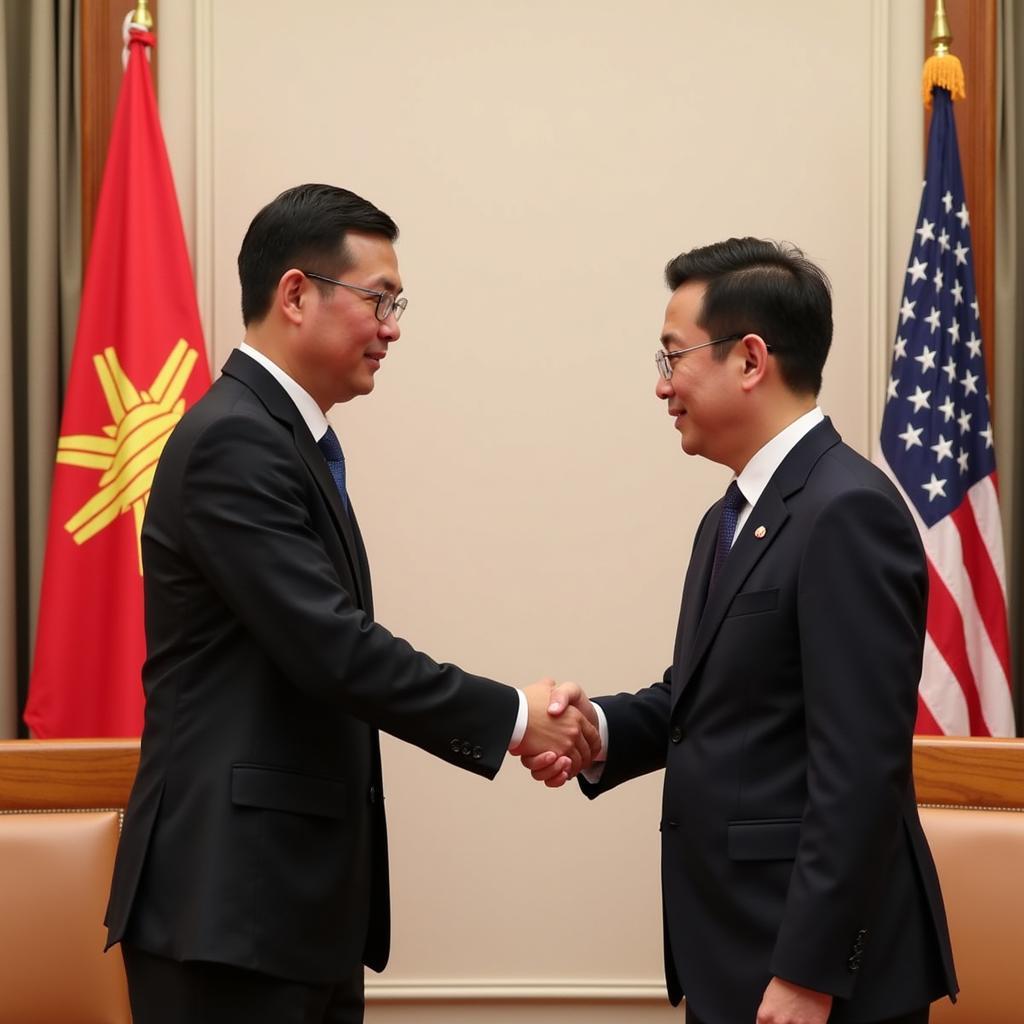ASEAN, the Association of Southeast Asian Nations, has emerged as a powerful economic and geopolitical force in the 21st century. Its rapid economic growth and strategic location have propelled it to the forefront of global trade and investment, attracting attention from major players worldwide. This journey of growth and integration is closely intertwined with the forces of globalization, shaping both the region’s opportunities and challenges.
ASEAN’s Position in the Globalized World
Globalization has been a key driver of ASEAN’s remarkable economic progress. The region has embraced open markets, promoting trade liberalization and investment inflows. ASEAN’s strategic location as a bridge between East and West has facilitated the flow of goods, services, and capital. This has led to the creation of new markets, opportunities for businesses, and a rise in living standards for its citizens.
“ASEAN’s integration into the global economy has been a remarkable success story,” says Dr. Lee Wei, a renowned Southeast Asian economist. “The region’s commitment to free trade and investment has created a dynamic and competitive economic environment.”
The Benefits of ASEAN’s Globalization
- Economic Growth: The region has experienced significant economic growth, fueled by increased trade, investment, and tourism.
- Job Creation: Globalization has resulted in the creation of new jobs, particularly in the manufacturing and services sectors.
- Technological Advancement: ASEAN has embraced technological advancements, leading to increased productivity and innovation.
- Improved Infrastructure: Globalization has spurred investment in infrastructure, improving connectivity and trade flows.
- Regional Integration: Globalization has encouraged greater regional integration, fostering collaboration and cooperation among ASEAN member states.
Challenges and Opportunities
Despite its success, ASEAN faces challenges in its globalization journey. These include:
- Economic Disparities: Gaps in economic development persist among ASEAN member states.
- Competition: ASEAN faces increasing competition from other regions, particularly China.
- Environmental Sustainability: Globalization’s impact on the environment raises concerns about resource depletion and pollution.
- Social and Cultural Impacts: Globalization can lead to cultural homogenization and challenges to traditional values.
ASEAN’s leaders recognize these challenges and are actively working to address them. They are implementing policies to promote sustainable development, enhance regional cooperation, and build resilience against global economic shocks.
ASEAN’s Future: Embracing Globalization
ASEAN’s future is inextricably linked to globalization. The region’s success will depend on its ability to adapt to the evolving global landscape.
- Digital Integration: ASEAN must embrace digital technologies to enhance competitiveness, improve connectivity, and promote innovation.
- Sustainable Development: The region needs to prioritize sustainable development to balance economic growth with environmental protection.
- Regional Collaboration: ASEAN must strengthen regional collaboration to address shared challenges and leverage collective strengths.
- Strategic Partnerships: Developing strategic partnerships with major economies will be crucial for ASEAN’s continued success.
“ASEAN has a bright future ahead,” states Professor Kimiko Hayashi, a leading expert in Southeast Asian studies. “By embracing globalization, strengthening regional cooperation, and prioritizing sustainable development, ASEAN can continue to grow and prosper.”
FAQ:
Q: What are the key drivers of ASEAN’s economic growth?
A: Key drivers include increased trade, investment, tourism, and the adoption of digital technologies.
Q: How has globalization impacted ASEAN’s cultural landscape?
A: Globalization has led to both opportunities and challenges for ASEAN cultures. It has facilitated cultural exchange but also raises concerns about cultural homogenization.
Q: What are some of the key challenges facing ASEAN in its globalization journey?
A: Challenges include economic disparities, competition from other regions, environmental sustainability concerns, and social and cultural impacts.
Q: What are some of the key opportunities for ASEAN in a globalized world?
A: Opportunities include access to new markets, investment inflows, technological advancements, and the potential for regional collaboration to address global challenges.
Q: What are the key steps ASEAN can take to further integrate into the global economy?
A: Key steps include embracing digital technologies, prioritizing sustainable development, strengthening regional cooperation, and fostering strategic partnerships with major economies.
